Hank Canterbury
ATP MEL & SEL, CFII MEL & SEL
20,000+ flying hours, including 9,000 instructing, primarily in Beechcraft airplanes
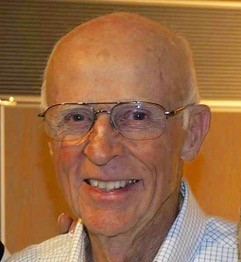
BPT: Hank, what first attracted you to aviation – and why?
HC: Starting from early childhood I had a strong interest in things that
flew. But I flunked kite flying so I moved on to rubber band powered balsa models then to U-controlled gasoline powered ones. Dad was in WWII, 8th AF and sent me various model planes that he made while in England.
I finally got into real planes with an uncle during my late teens and have never stopped since.
BPT: When and where did you learn how to fly?
HC: I started in Huntsville, AL and continued training during my Academy years, earning my Private at Stapleton Airport in Denver.
After graduating from Air Force Academy, I completed Air Force Pilot Training, and flew jet fighters for 30 years in USAF. I also maintained my currency in small general aviation aircraft, when available to me.
BPT: What aircraft have you flown?
HC: I’ve flown Cubs, Cessnas, Luscombs, just about every model of Bonanza and Baron, KingAirs, Pilatus PC12, all tactical fighters from the F100 through the F15 and F16, including the A10. Large airplanes frighten me.
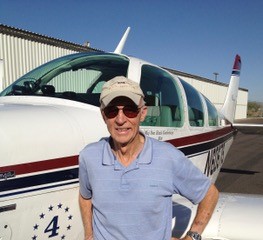
BPT: What do you currently fly /own?
HC: I have owned my F33A for 38 years — and I fly it often. I also own and regularly fly my Pitts S2C aerobatic bi-plane. I use the Pitts to compete in regional competitions and to simply enjoy the wonderful experience of flying such a delightful airplane in through all areas of its capabilities envelope.
BPT: What are the highlights of your flying career?
HC: Becoming a fighter pilot and getting to fly the most powerful
advanced fighters of the day.
- Being selected as the first Air Force Academy graduate to fly on the USAF Aerial Demo Team, the Thunderbirds as the slot pilot
- Being selected to command various Air Force fighter organizations at all levels from flight and squadron, to commander of the two largest fighter training wings in the US
- Flying two combat tours in SE Asia, 376 combat missions
- Serving as Vice Commander of a tactical Numbered Air Force.
A sustaining highlight began when I started our son out on a flying career: early attendance at ground school; aero club mentoring; and attaining his private license; soloing him in our Bonanza; taking family trips in the plane; attaining an aeronautical degree in college; and most of all, watching him grow into an Air Force fighter pilot and senior leader and Commander. He now owns an A36 and is checked out in our Pitts.
Subsequent to retiring from the military, I continued flying my Bonanza on business and pleasure trips across the country, while instructing and training others in civilian aviation. Additionally, I flew a PC-12 seven years for a local partnership.
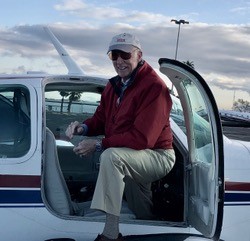
BPT: How did you become involved with BPT?
HC: After purchasing my Bonanza I joined the American Bonanza Society [ABS] and learned of their new program to train Beech pilots. I wanted to become part of that team. It was run by Sam James in 1987 so I applied and was accepted as one of the instructors.
Over the years I continued with the original group, both flying, writing and presenting some of the ground school lectures, as we went through several reorganizations. I was one of the core instructors who co-founded and invested in our current BPT organization.
BPT: Why is BPT important to you?
HC: We provide a very high level of Beechcraft and aviation experience to owners who are our customers, from initial training to long term continued education and currency. I am delighted to be a part of that tradition, and I thoroughly enjoy sharing my 20,000 hours of insight and knowledge with the wide variety of pilots who come to us for training.
BPT: What makes BPT unique?
HC: Our personal, face to face business model that includes 2 days of immersion in flying related activities in the customers airplane as well as the socialization among instructors and customers over the weekends. Many of our customers repeat the experience regularly and have become friends.
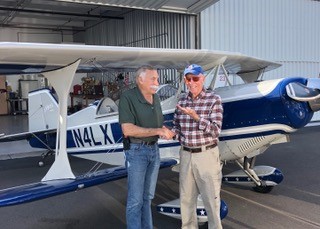
BPT: Why would you recommend BPT:
HC: Through BPT attendance, our customers gain greater confidence, understanding and the ability to operate their aircraft both efficiently and with much reduced risk, thus enhancing the value and expanding the usefulness of their investment.
Over the years, it has been very gratifying to see the results of improved piloting skills, greater confidence, understanding and use of amazing new avionics. We feel that the training and experiences our instructors have provided has steadily and significantly reduced the number of accidents / incidents in Beechcraft airplanes.
BPT: Would you recommend BPT to a new pilot?
HC: Without a doubt. It is so important to get started right — and BPT has
the instructors with the most combined Beechcraft experience you
will find anywhere.
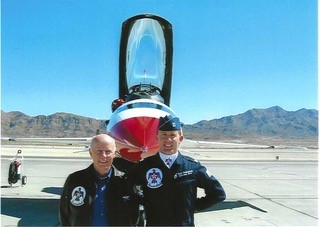
BPT: How about for the seasoned pilot? Is BPT a good fit?
HC: Absolutely. We constantly upgrade our presentations to continue providing relevant, timely instruction to maintain currency and proficiency. As well, we offer hands on operation of their new avionics and autopilots.
BPT: Is there anything else you would like to add?
HC: “Fly often, train regularly, practice to always be improving.”



